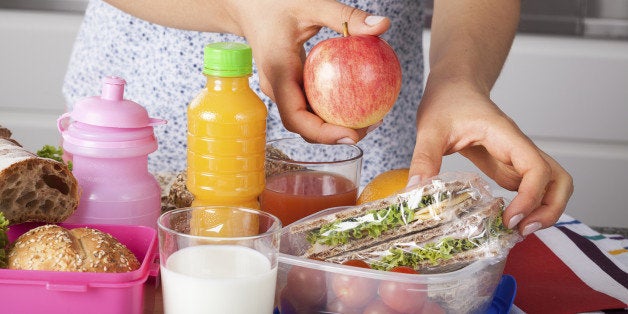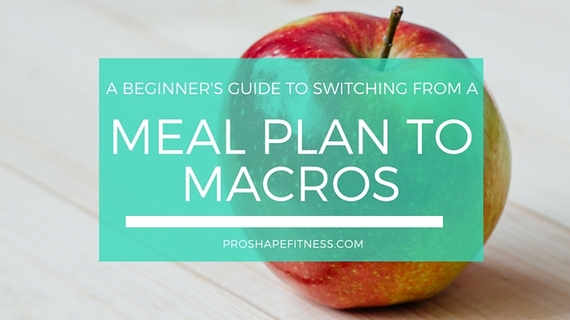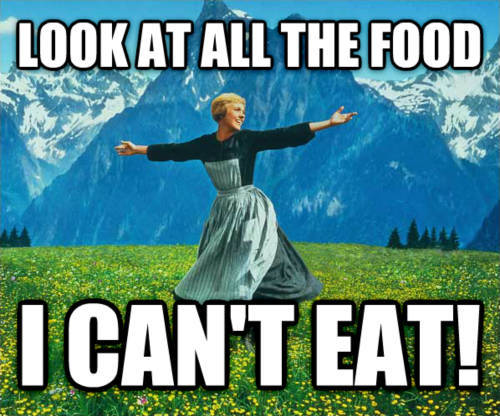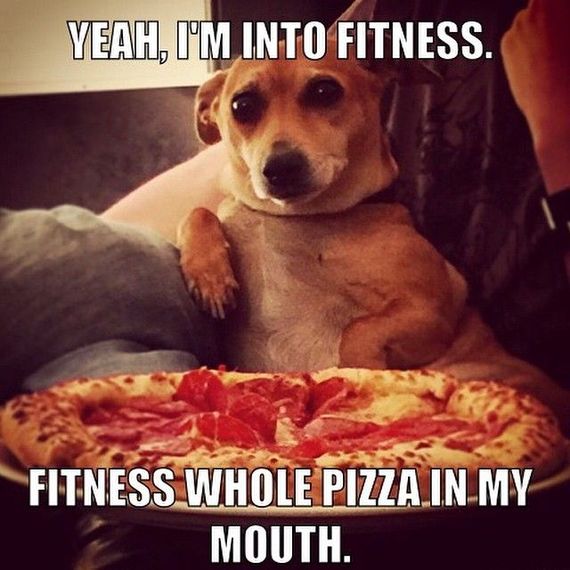
Before I start, I'd like to make one point very clear. As a coach, I'm not a fan of meal plans. This article is not an "X calorie meal plan" to follow; it's a guide for those of you making the big switch from a "clean eating meal plan" to a macro-based diet (welcome to the dark side). Once you get the basics down, you'll never go back.
As much as I admonish meal plans (read my story here), they have benefits. For people who are completely brand spanking new to the world of fitness and have no idea the nutritional difference between a pop tart and an apple, a meal plan can be useful at the start. The key phrase here, at the start.
I view meal plans as a simple jump-start for meal suggestions, not as an ironclad framework that can't be modified. They're an excellent way to give people healthy meal ideas when first getting started.
"Give a man a fish, and you feed him for a day. Teach a man to fish, and you feed him for a lifetime."
A meal plan is only good for as long as you can follow it. A macro-based plan, on the other hand, will set you up with skills to use for a lifetime.
With a meal plan, you're extremely limited in the foods you can eat. What happens when you want to grab dinner with a friend but your next meal consists of 4oz chicken breast and 1 cup steamed broccoli? Guess you aren't going out to that dinner. Or maybe you will, but you'll be lugging around Tupperware in your bag. Sexy.
Not let's say instead, you're on a macro-based plan. It's the end of the night, and your friend invites you to the Italian restaurant down the street. You say yes, and quickly pick the best meal to utilize your remaining macros.
With a macro-based plan, instead of being limited by exactly what you can eat and how much, you have a daily goal for grams of protein, fat, and carbs. Hit these daily goals and you're golden.
Want to go out to dinner with a friend on Friday? No problem, you can plan for it. Maybe you'll even save some extra carbs for that favorite pasta dish.
Regardless of what you choose to eat, the difference is that you'll have the freedom and flexibility to decide. And just as importantly, you can have a social life that doesn't revolve around the next meal on your plan.
What's the downside?
The only thing that some may consider a downside of macro-based plans is that they take a bit more work and planning upfront. However, I don't think this a real disadvantage. Why? Well, you'll learn to think on your own and not to rely on someone or something telling you exactly what you can and can't eat.
You'll develop more self-awareness of your body and what effects particular foods have on you. You'll become more creative with food choices and learn more about nutrition overall.
So what's the best place to start when switching over to a macro-based diet?
When you're new to the world of macros a recommendation of 150g protein, 170g carbs, and 60g fat can sound like a foreign language. Instead of going into panic mode and begging your coach for a meal plan, remember the basics.
Start with what you're currently eating and use that as your base. Plug your meals into whatever app you're using for tracking and see how far off your totals are. From here it's just a little game of Tetris. A bit less carbs here, a sprinkle of protein there and voila! The point is not to change what you're eating entirely but to make some tweaks that allow you to hit your recommended daily goals.
While it's perfectly ok to wing it and log your food throughout the day, it's a lot easier to plan your meals the night before. You can always change them later, but when you're first starting, it's easy to misjudge your intake and accidentally consume all your carbs by lunchtime. In the evening, you'll then realize all you have left is a plethora of protein (and nobody wants to eat a giant plate of egg whites for dinner).
As you get more experienced with tracking macros, you can "wing it" throughout the day.
Now if you're the kind of person who craves cookies (or some other form of deliciousness), then by all means fit a small amount into your macros. I tell my clients all the time that I would rather them practice moderation with the foods they love than give them up entirely and end up bingeing the next day. A small cookie each day isn't going to set you back, but eating an entire box sure will.
This piece of advice could be a separate post of its own, but it bears mentioning as I believe it's one of the primary benefits of a macro-based plan. By practicing moderation, you'll be a lot less likely to develop intense cravings, binge episodes and an unhealthy relationship with food.
From my experience, clients who follow a macro-based plan maintain healthier body fat levels with less yo-yo weight gain. I could go on for ages about this, as I struggled with it in my early years competing in fitness competitions.
There is no one "right diet." It all comes down to consistency. You're much more likely to be successful on a nutrition plan that you can follow long-term.
Suffice it to say I'll never go back to following a strict meal plan.
If you found this article informative and would love to hear more fitness tips, I invite you to check out my bio and download a free copy of my complete fitness tracker here.
This article originally appeared on www.ProShapeFitness.com


